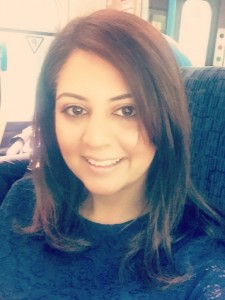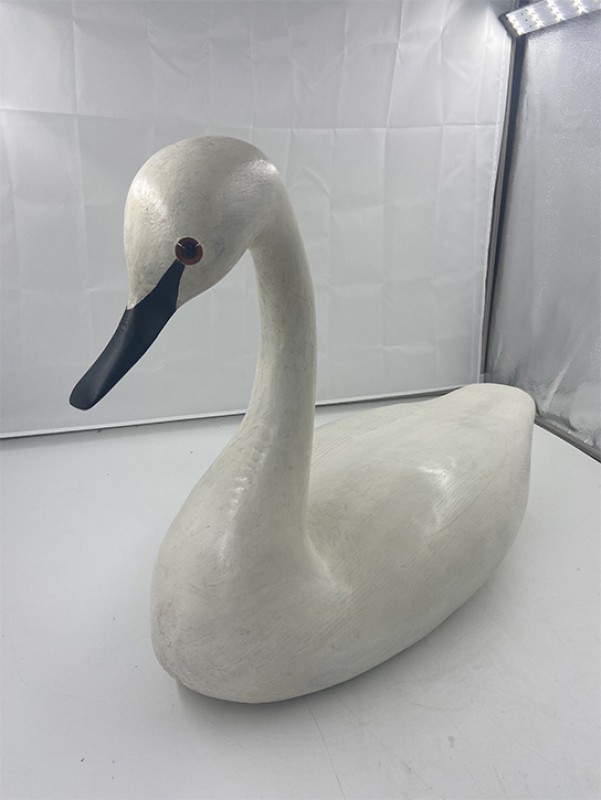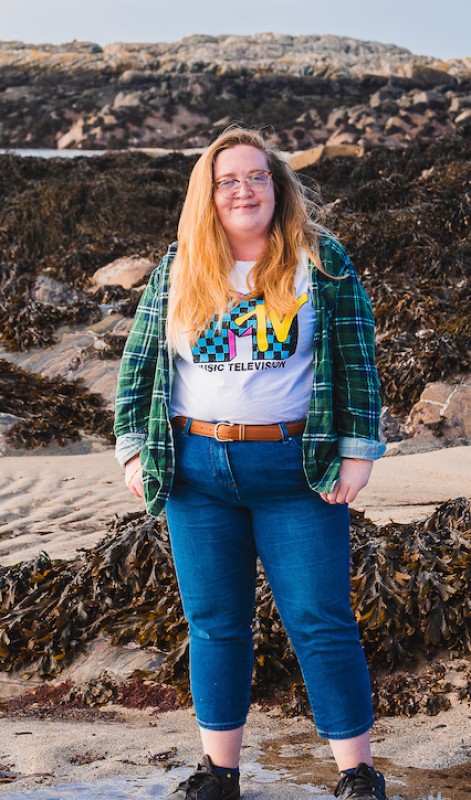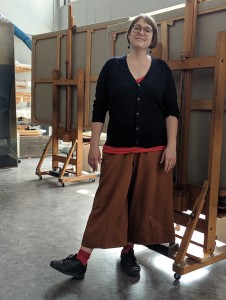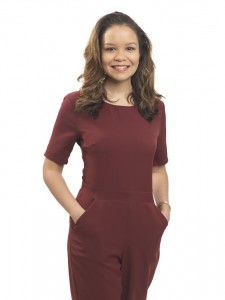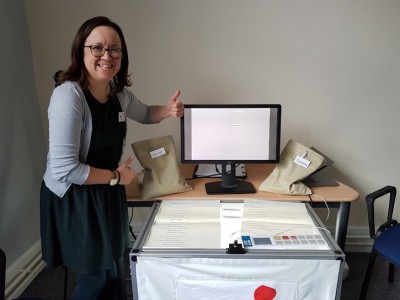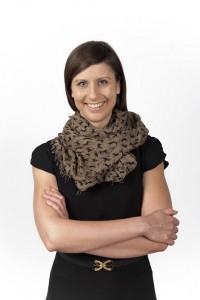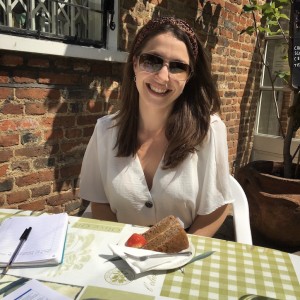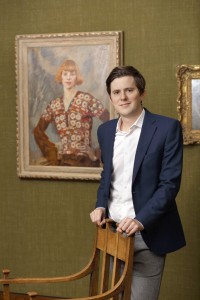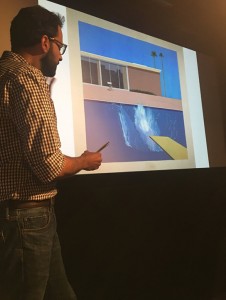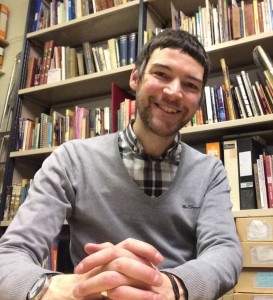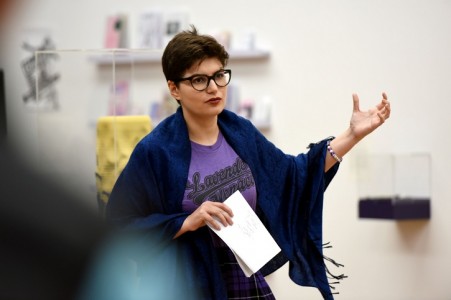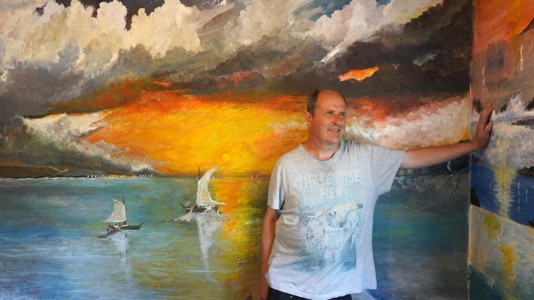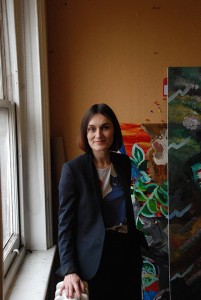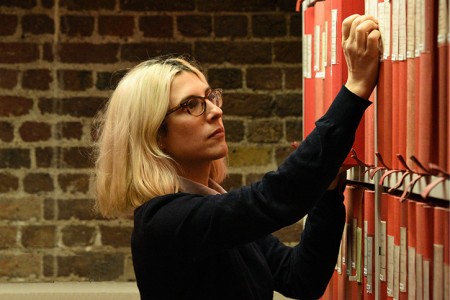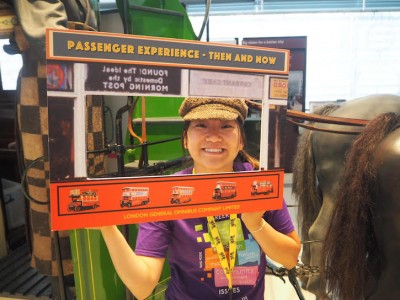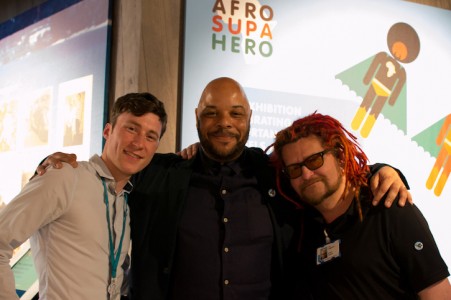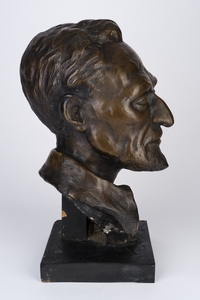For Art UK's 'Being...' series, we take a look at a day in the life of a professional working in the arts, heritage or museum sector.
Jo Meacock is Curator of British Art at Glasgow Museums, responsible for painting, sculpture, prints and drawings, pre-1960.
What's your role?
Somehow or other I’ve landed in a role that encapsulates my main areas of interest: art, historical research and social justice. I am passionate about art for the many, not the few, and believe in the importance of museums in enriching communities, improving health and well-being and promoting access and equality. Glasgow Museums has a wonderful historic collection, and is particularly strong in nineteenth-century British art, my specialism, but it is primarily concerned to use that collection to enhance the lives of the people of Glasgow and visitors to the city. How inspiring is that!
As a curator for Glasgow Museums, I am not responsible for art in just one location but work across the nine different venues that make up the local authority museum service. However, I am usually based in one of two buildings – Kelvingrove Art Gallery and Museum, where most of the British Art collection is on public display, and Glasgow Museums Resource Centre (GMRC), where the majority of staff are based and where all artworks not on display or on loan are stored.
What's your morning routine?
If I’m going to be at Kelvingrove, I don’t have such a lengthy commute and can squeeze in a run before work. So I get up at 5.45am – which I confess is difficult on dark mornings, but the kids are up and clattering about from 5.30am anyway – and I feed the cats, then go for a roughly 10k run. For me, it’s all about how much you can cram into very little time, and so I usually have a load of washing going at the same time. Breakfast is eaten standing up, while listening to the news on the radio and making packed lunches for everyone.
What's your journey to work like?
After dropping my two boys, Elliot (10) and Theo (7), off at school at 8.45am, I cycle to Kelvingrove – a lovely three-mile ride along the Forth and Clyde canal and River Kelvin and through Kelvingrove Park. It is over 10 miles to GMRC, so that journey takes about an hour on my bike. Therefore, if I’m at GMRC the kids have to go to breakfast club at their school at 8am, so I can be in work for 9am – that is most days.
What's a typical day at work for you?
If I’m at Kelvingrove it is likely that I am giving a talk, have a project team meeting or am involved in installing or deinstalling an artwork. Sometimes only four people might attend a talk, sometimes 20 – very occasionally 50! However, the talks are filmed and posted on social media and the amazing thing is how many people view remotely – the average is 1,500. This is fantastic in terms of access, meaning that people who can’t get to the museum, whether due to geographic, economic, physical or social factors, can still be part of our programme. I really enjoy giving these talks; they are a brilliant opportunity to engage with our visitors and get excited about our collection.
Jo bringing out First World War objects for delegates at creative symposium Doubtful Occasion
GMRC, 5th October 2017, also part of the Borland First World War centenary art commission 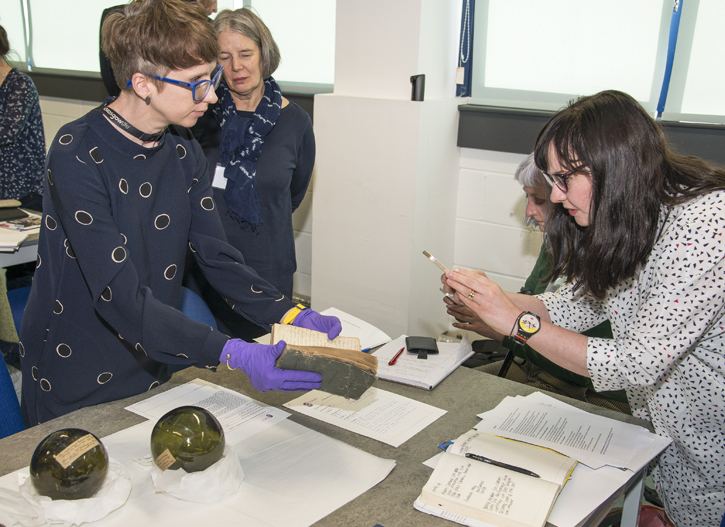
At Kelvingrove, I might also have a meeting with our Learning and Access team about an upcoming display. Any text that we write for the museum is developed in collaboration with Learning and Access curators to make sure that it is engaging and accessible. This was one of the aspects of my job that I found hard initially, coming from academia, but I’ve learnt not to be precious about what I write and now really enjoy the team-working – the text is certainly better and more inclusive as a result. Writing 30-word labels can be challenging, but it is a good exercise to be able to convey information about an object simply and succinctly for visitors. While working in Kelvingrove I also meet up with students, special interest groups or visitors with enquiries about the collection.
A day at GMRC is a little different, although I may give a tour of the painting store to a specialist group or as part of our general public programme. I am often busy researching or writing for an exhibition or display, or for a publication.
Jo speaking at the opening of Christine Borland’s installation 'I Say Nothing'
Kelvingrove Art Gallery and Museum, October 2018. (Christine Borland, I Say Nothing, 2018, co-commissioned by Glasgow Museums and 14-18 NOW, with Art Fund support.) 
In 2018 I worked on a book with Scottish artist Christine Borland to coincide with a new artwork, I Say Nothing, 2018, co-commissioned by Glasgow Museums and 14-18 NOW, with Art Fund support. It was created in response to Glasgow Museums’ First World War collection.
I’m currently working on a chapter for a book about Jewish Czech artist and Holocaust survivor Marianne Grant for a new publication that is hopefully coming out in 2019 to coincide with 80 years since the start of the Second World War, and the Insiders/Outsiders Festival, celebrating refugee artists who came to this country, fleeing from Nazi persecution.
At GMRC I might be writing descriptions for our online collections site or adding date or provenance research to our internal collection management system, Mimsy. The museum is still actively expanding its collection and I often have to write grant applications to funding bodies, making cases for new acquisitions, as well as liaise with trustees and estates regarding gifts and bequests. This year we’ve acquired two new paintings, details to be announced (drum roll here), final purchases of the Hamilton Bequest through which the museum has acquired 90 paintings over 91 years.
During the course of a year, I usually have one or two postgraduate students working with me on placement. This is a really good experience for them in terms of understanding the practical workings of a museum. It can also be incredibly valuable for us. In 2018 I supervised two students from the Dress and Textiles Histories MLitt art history course at the University of Glasgow who researched costume in paintings in the Burrell Collection. One specialised in seventeenth- to eighteenth-century dress and the other nineteenth- to twentieth-century dress. Their work fed directly into the Burrell redisplay project. This major capital project has been a large part of many curators’ work schedules for the past four years, including my own, for which we have been developing stories, refining object lists, working with local community groups and text-writing for the re-opening in late 2020.
How do you take breaks?
My job is multi-faceted and demanding, but very rewarding. I sometimes find myself eating my lunch at my desk – usually a hummus sandwich and an apple. Multiple cups of tea are consumed during the day – the number relative to the level of creativity required.
What do you do after work?
I have to leave work by 4.30pm, if at GMRC, and 5pm if at Kelvingrove, so that I can pick my boys up from their after-school club which closes at 5.45pm. It is then a rather gruelling few hours of parenting: clubs, homework, dinner, baths and bed. By the time the boys go to sleep, I am ready for bed myself, although I may still have some reading or prep to do for the next day.
By the time Friday comes I am a wreck, and frustrate my husband Ian by falling asleep in front of our Friday film. The glamorous life of a working mum! I very much look forward to the weekends when I can spend time with my boys and perhaps even sit down with a novel for 10 minutes. Although there is the shopping to get and the bathroom to clean… Cycling and running keep me sane and give me valuable mental space, as well as replacing those gym classes that just don’t fit into the schedule.
One of the most rewarding things about working at Glasgow Museums is being part of a team of motivated, enthusiastic and caring people all with a common goal – curators, conservators, editors, designers, technicians and front of house staff – and having the opportunity to work on exciting projects that involve research, communities and creative collaboration. At the end of the day, I may feel exhausted, but I also feel incredibly blessed.
Dr Jo Meacock, Curator of British Art at Glasgow Museums
Do you work in the arts, heritage or museum sector? Would you be kind enough to share an example of your working day for our 'Being...' series? Please get in touch with Art UK at pitches@artuk.org as we'd love to hear from you.
